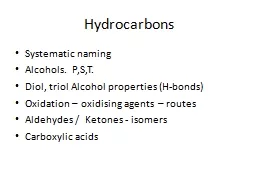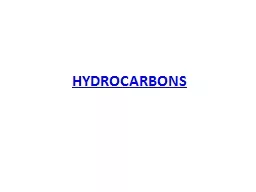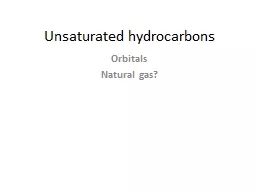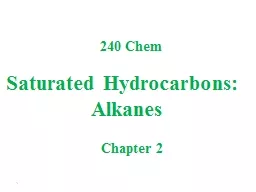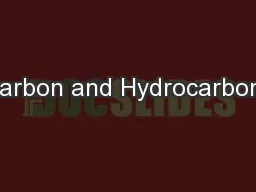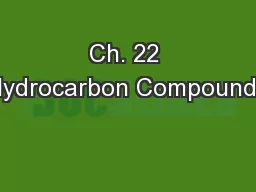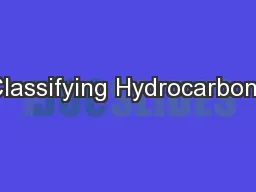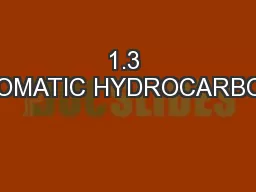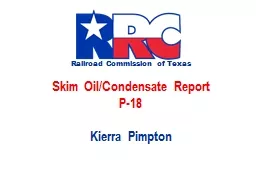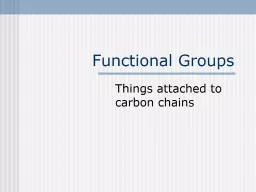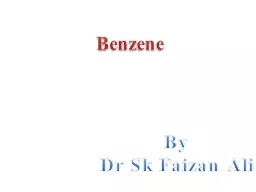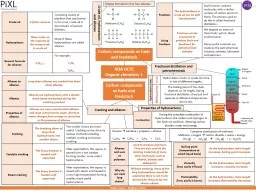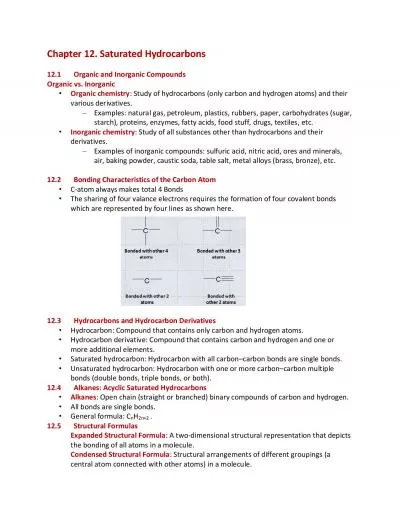PPT-Hydrocarbons
Author : pasty-toler | Published Date : 2017-10-23
Systematic naming Alcohols PST Diol triol Alcohol properties Hbonds Oxidation oxidising agents routes Aldehydes Ketones isomers Carboxylic acids A Any
Presentation Embed Code
Download Presentation
Download Presentation The PPT/PDF document "Hydrocarbons" is the property of its rightful owner. Permission is granted to download and print the materials on this website for personal, non-commercial use only, and to display it on your personal computer provided you do not modify the materials and that you retain all copyright notices contained in the materials. By downloading content from our website, you accept the terms of this agreement.
Hydrocarbons: Transcript
Systematic naming Alcohols PST Diol triol Alcohol properties Hbonds Oxidation oxidising agents routes Aldehydes Ketones isomers Carboxylic acids A Any acceptable structural formulae for propanal. Learning Objectives. :. Describe the process of . fractional distillation. .. Describe the process of . cracking. crude oil.. Explain the purpose of fractional distillation and cracking.. Write down as many ideas as you can remember about crude oil.. Hydrocarbons are composed, as their name suggests mainly of carbon and hydrogen atoms, though some types have oxygen, nitrogen or . sulphur. atoms. . Hydrocarbons are divided into two groups, . Aliphatics. Orbitals. Natural gas?. Fig. 11.1. Aliphatic Hydrocarbon Structure Comparison. Bonding and Geometry. of Two-Carbon Molecules . 11.1 Structure and Physical. . Properties. Alkanes. 240 . Chem. Chapter 2. 1. Hydrocarbons. 2. General Molecular Formula of Hydrocarbons. (Homologous Series) . 3. Carbon . Name . Molecular. Formula . Structural. Formula . 1. Methane . CH. 4. Lecture 12. Organic chemistry. What distinguishes organic chemistry from other areas of chemistry?. Origins – compounds from plants and animals. Organic compounds were though to have a “v. ital force” and as such . Chp. . 22 . pg. . 668. A. . Abundance and Importance of Carbon. Structure and bonding of carbon. Has nonmetallic properties. Electron configuration of 1s. 2. 2s. 2. 2p. 2. 4 valence electrons – 2s and 2p electrons. 22.1 Hydrocarbons. Organic Chemistry. includes almost all carbon compounds. Not limited to compounds found in living cells. Hydrocarbon: organic compound made of only hydrogen and carbon atoms. hydrocarbons. Chemistry 11. Ms. McGrath. Classifying Hydrocarbons. Please copy the concept map on page 331 of your textbook.. Hydrocarbons. Consists of . linear. (as opposed to forming rings of carbon atoms) chains of carbon atoms.. MICHAEL FARADAY (1791-1867). first person to isolate and identify benzene. early benzene uses:. - . decaffeinate . coffee. - antiknock additive . in gasoline. - solvent in chem rxns. now we know benzene is a carcinogen!. . . Skim Oil/Condensate Report. P-18. Kierra Pimpton. . Instructions. Form . P-18 Skim Oil and Condensate Report. . Who . needs . to file the P-18?. . The Form P-18 . needs . to be filed by operators of facilities from which skim liquid hydrocarbons (oil and/or condensate) are sold or disposed of by injection or other approved methods if the facility serves more than one oil lease or gas unit. (NOTE: If a facility serves only one oil lease or gas unit, any liquid hydrocarbons removed from the facility MUST be reported on Form PR as production from that oil lease or gas unit. A Form P-18 MUST be filed).. Functional Groups. Atoms other than hydrogen or carbon covalently bonded to a carbon atom in an organic molecule.. Most commonly oxygen, nitrogen, or the halogens.. The presence of a functional group drastically changes the chemical properties of a molecule.. AROMATIC HYDROCARBONS-. -------Benzene. Synonyms. Benzol. , . Benzole. , . Benzolene. , Coal naphtha, Phenyl hydride, . Annulene. , Carbon oil, . Cyclohexatriene. , Mineral naphtha,. Motor benzol, Phene, Pyrobenzol, Pyrobenzole.. Crude oil, hydrocarbons and alkanes. Carbon compounds as fuels and feedstock. Crude. oil. A. finite resource. Consisting. mainly of plankton that was buried in the mud, crude oil is the remains of ancient biomass.. 12.1 Organic and Inorganic Compounds Organic vs. Inorganic • Organic chemistry : Study of hydrocarbons (only carbon and hydrogen atoms) and their various derivatives. – Examples: natural gas, pe
Download Document
Here is the link to download the presentation.
"Hydrocarbons"The content belongs to its owner. You may download and print it for personal use, without modification, and keep all copyright notices. By downloading, you agree to these terms.
Related Documents

